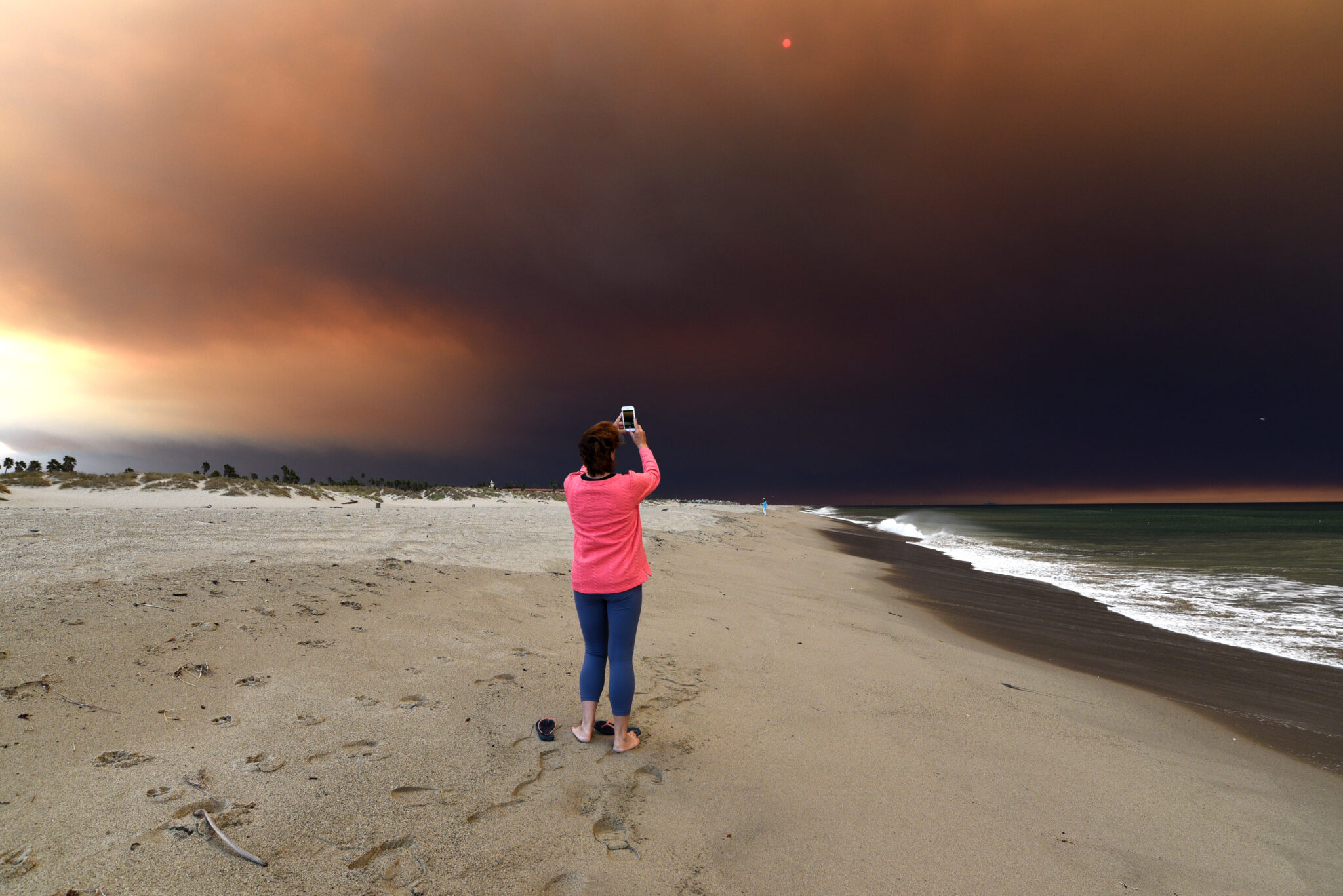Smoke from Southern California wildfires moves towards the Pacific Ocean, creating spectacular dark skies as a local on Oxnard Shores Beach California captures the moment on Nov. 9, 2018. Credit: Paul Harris/Getty Images
Apart from clouding skies, irritating eyes, clogging respiratory systems and warming the climate, smoke from huge wildfires may actually help fires grow in some coastal areas, according to recently released research. The acrid smoke billowing from a megafire can drive a feedback loop impacting surface winds and humidity to help a fire spread, scientists said.
“Wildfire is not just a passive responder or consequence of climate warming or extreme weather conditions,” said Xin Huang, an associate professor of atmospheric sciences at Nanjing University and one of the paper’s authors. “It’s also an active and very important participant in the extreme event.”
Firefighters and scientists have long understood that wildfires can create their own weather, with large blazes spawning stormy plumes of clouds that can drive strong, erratic winds that fan flames or strike the ground with lightning. But the new research suggests the smoke from large wildfires may also affect the weather and the fires they drive.
The team demonstrated “unexpectedly strong feedback between wildfire and weather” in extreme fires in two different coastal regions on opposite sides of the world from one another—the Mediterranean climate of the U.S. West Coast and the monsoon-influenced climate of Southeast Asia. The results could add another datapoint to land managers’ complex calculations for how to cope with wildfire.
